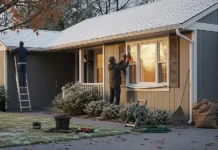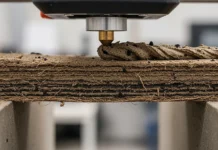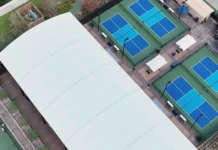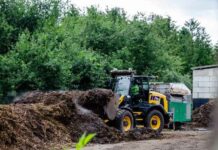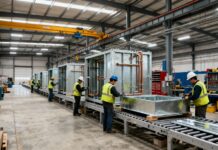The growing emphasis on outdoor play spaces has become increasingly vital in today’s screen-dominated world, where creating safe and engaging environments for children’s physical activities is paramount.
Designing an effective outdoor play area requires careful consideration of multiple factors, from selecting an appropriate location and installing proper safety surfaces to incorporating diverse play elements that promote both physical and cognitive development.
The strategic implementation of shade structures, regular maintenance protocols, and thoughtful supervision guidelines transforms these spaces into dynamic environments where children can thrive while developing essential life skills through unstructured play.
Choosing a Location and Installing Equipment
Creating a safe outdoor play space starts with selecting an open area that’s clear of potential hazards. The ideal location should provide ample room for children to move freely while engaging with different outdoor playground equipment. After picking the perfect spot, removing debris and leveling the ground creates a stable foundation for the installation process.
Safety surfacing plays a critical role in preventing injuries from falls. Installing rubber mats or mulch materials underneath play structures helps absorb impact. The surfacing material should extend several feet beyond the equipment’s edges and maintain proper depth based on structure height.
To ensure a secure and stable foundation for any outdoor play space, it’s important to follow these key preparation and installation steps:
- Clear all obstacles and hazardous materials from the designated area
- Level the ground thoroughly before installing any equipment
- Install safety surfacing with appropriate depth and coverage
- Maintain proper spacing between different play structures
- Secure all equipment firmly to the ground using appropriate anchors
The benefits of outdoor play spaces extend beyond physical activity. Children today spend seven hours on screens daily, making unstructured outdoor play more important than ever. By incorporating various play elements and ensuring proper installation, these spaces can provide engaging alternatives to sedentary activities while maintaining safety standards.
Health Benefits and Environmental Considerations
Outdoor play spaces serve as vital hubs for children’s physical and mental development. Regular outdoor activities have shown remarkable benefits for children’s overall well-being, particularly in their visual development. Studies indicate that kids who spend time playing outside show decreased nearsightedness and demonstrate improved academic performance.
Creating a safe and clean environment is essential for maximizing the health benefits of outdoor play. Environmental factors play a significant role in the quality of outdoor spaces, and companies offering pest control services in Roseburg help ensure these areas remain secure and free from health risks.
When outdoor environments are well-maintained, children experience enhanced cognitive development through natural exploration and discovery, improved physical coordination and gross motor skills, a strengthened immune system from exposure to natural elements, and better social skills through interactive group play activities.
The physical benefits extend beyond immediate health improvements. Children develop stronger muscles, better balance, and enhanced coordination through varied outdoor activities. These advantages contribute to establishing lifelong healthy habits and positive associations with physical activity.
Shade, Sun Protection, and Comfort Features
Proper shade structures serve as essential components in outdoor play areas, creating safe zones where children can enjoy activities without excessive sun exposure. Strategic placement of canopies and umbrellas helps maintain comfortable temperatures while blocking harmful UV rays during the hottest parts of the day.
To enhance comfort and sun protection in outdoor play areas, consider these effective shade solutions and design strategies:
- Install retractable shade sails that can be adjusted based on sun position
- Position natural shade elements like trees along the perimeter
- Create covered pavilions or pergolas for permanent shade solutions
- Set up portable umbrellas near high-traffic play zones
- Add covered benches or seating areas for adult supervision
The integration of comfort features enhances the overall play experience while promoting extended outdoor engagement. Water fountains and hydration stations placed at accessible heights encourage children to stay properly hydrated during active play.
Rest areas with sturdy benches allow supervisors to maintain clear sight lines while providing spots for children to take breaks. These thoughtful additions transform basic play spaces into dynamic environments where both children and caregivers can stay comfortable throughout their time outdoors.
Maintenance, Supervision, and Regular Inspections
Regular inspections and proper supervision form the backbone of a safe outdoor play environment. A consistent maintenance schedule helps identify potential hazards before they cause accidents. Checking for loose bolts, cracked surfaces, or damaged equipment should be part of daily operations. Quick repairs prevent minor issues from becoming serious safety concerns.
- Inspect all moving parts such as swings, seesaws, and climbing ropes for wear.
- Ensure ground surfaces have proper cushioning and drainage
- Look for sharp edges, protruding hardware, or splintered materials
- Test the stability and structural integrity of each piece of equipment
- Clear the area of debris, broken toys, or fallen branches.
Active supervision goes beyond just watching children play. Supervisors should position themselves strategically to monitor all areas while maintaining clear sight lines.
Understanding age-appropriate play patterns helps identify potential risks and guide children toward safe behaviors. Staff should know emergency procedures and keep first aid supplies readily available.
Documentation of inspections and any repairs keeps track of maintenance history and helps plan future upgrades. This systematic approach to playground safety creates an environment where children can explore and develop their physical abilities with confidence.
Key Final Steps for Safe and Engaging Outdoor Play Spaces
Creating a safe and engaging outdoor play area requires meticulous planning, from selecting appropriate locations to implementing comprehensive safety measures.
The integration of proper equipment installation, safety surfacing, and strategic shade placement demonstrates a commitment to children’s well-being while fostering an environment that promotes physical activity and social development.
By prioritizing regular maintenance, active supervision, and thoughtful design elements, outdoor play spaces become invaluable assets that combat sedentary behaviors and enhance children’s overall development while ensuring their safety and enjoyment.



